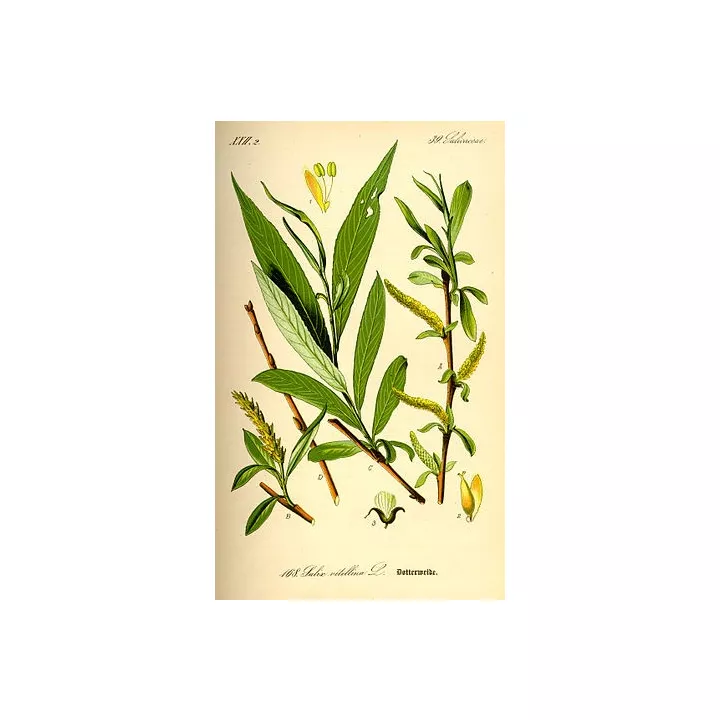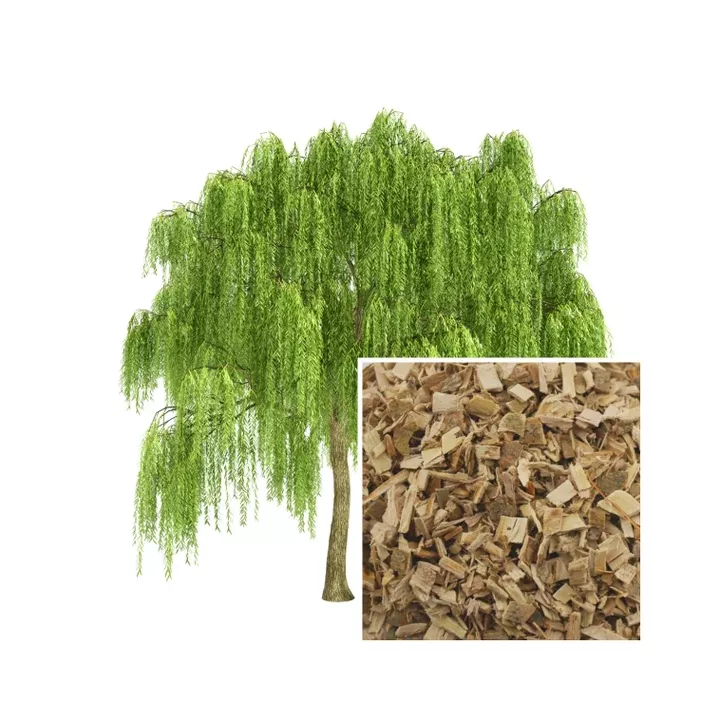What is cut bark willow used for?
White willow (Salix alba), native to Europe, grows mainly in damp areas. In phytotherapy, its bark and female catkins are used, harvested at specific times of the year to guarantee their effectiveness. Traditionally, the bark has been used to relieve a variety of ailments, including joint pain, fever and even to promote wound healing. Female kittens, meanwhile, are often suggested for easing painful menstruation and soothing sleep disorders.
Beyond its main applications, white willow bark is also recognized for its benefits on tendonitis and headaches. Its richness in tannins, flavonoids and salicylates, particularly salicin, gives it anti-inflammatory and analgesic properties. The transformation of salicin into salicylic acid in the body is responsible for the much sought-after soothing effect. The legend of aspirin is thus rooted in the virtues of this emblematic plant, which continues to attract attention for its therapeutic potential.
Willow bark is a valuable natural source that can provide numerous benefits. Here's a detailed look at its main effects:
One of the most common uses of willow bark is its effectiveness against joint pain, particularly that associated with osteoarthritis. Thanks to its active components, this plant can reduce inflammation and soothe pain. Studies indicate that it may reduce the need for conventional anti-inflammatory drugs. By incorporating white willow into your routine, you can expect significant relief from these aches and pains.
Lower back pain is common and often disabling. Research indicates that white willow bark can effectively alleviate this pain. People suffering from chronic low back pain may find this natural remedy a promising alternative for managing their discomfort without major side effects. By using this plant regularly, you can expect a marked improvement in your quality of life.
In addition to its analgesic properties, willow bark is also recognized for its effects on headaches, menstrual pain and even for helping to reduce fever. It proves useful for colds and mild ailments, bringing appreciable comfort during periods of illness. What's more, for those suffering from acne or hair problems, white willow's anti-inflammatory properties can help improve skin condition and promote healthy hair.
The Iphym laboratory also offers you Whole Leaf Senna, at the best price in our online pharmacy.
How to use this plant
To reap the full benefits of willow bark, we recommend using it as an infusion. The usual dose is 2-3 g of bark in a cup of boiling water, to be taken before each meal. This method extracts the plant's active ingredients, optimizing its beneficial effects. Feel free to personalize your infusion by adding a little honey or lemon to enhance the taste.
Give your opinion on the advice for use and dosage of Willow bark cut with our partner Verified opinions after your purchase.
Precautions for use
Although white willow is generally safe, there are some contraindications. It is not recommended for people with stomach or duodenal ulcers, or those allergic to non-steroidal anti-inflammatory drugs or salicylates. Individuals at risk of bleeding or suffering from asthma, gout or kidney disease should avoid its use. In addition, white willow bark is not recommended during the first two trimesters of pregnancy or while breast-feeding. Finally, it is not intended for children and adolescents under the age of eighteen.
What does it contain?
Latin name: Salix alba
Family: Salicaceae
Common names : White willow, White osier
Parts used: Bark
Origin: Europe
Active ingredients: Salicylates, flavonoids, phenolic compounds, tannins
Presentation
Available in 100 g, 250 g or 1 kg formats, chopped willow bark lends itself to a variety of preparations and can be adapted to your daily needs.












